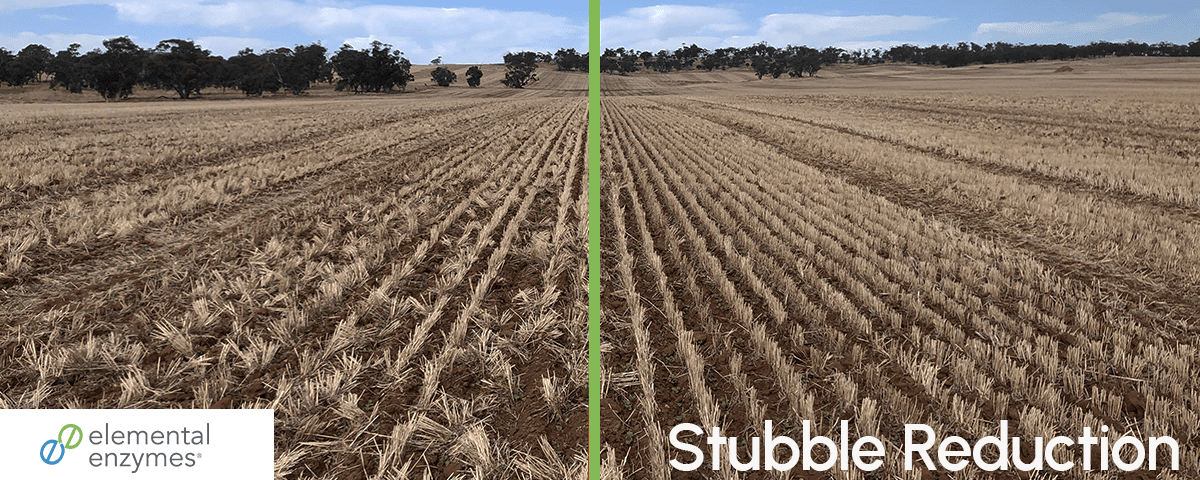
Elemental Enzymes turning the peptide on plant disease

Crop Solutions Beyond Borders and Labels
It’s a fact of farming that crop stubble can be both a grower’s valuable friend and vexing enemy.
Walking or driving a tractor through a field post-harvest bears testament to the “waste” left behind. However, that stubble holds stored nitrogen and other nutrients to aid new crop growth — once we can unlock it from behind all that durable lignin and cellulose, that is.
At Elemental, we asked ourselves, how do we unlock the stored nutrient value from the crop leftovers as well as make new crop seeding easier? Our team developed proprietary enzyme formulations that give growers an efficient, environmentally safe way to clear out the stubble and put its rich nutrient goodness back into the soil to upcycle into their next season of cash crop.
Chad Sayer, based in Melbourne as our Field Development Lead – APAC EMEA, understands the challenges of growers in an extremely dry environment. To cut down on erosion, most employ zero- or minimal-till practices. “Anything they can do to conserve soil moisture directly translates to yield, so the adoption of these practices has been huge,” he said.
However beneficial to soil management leaving crop stubble behind is, it can create headaches for the next crop. Speed-tilling — smashing the stubble mechanically — burning it, or trying to degrade it chemically, for which effectiveness varies, have all been common practices.

Directly applying Elemental’s enzyme products to the stubble post-harvest, pre-plant, or pre-emergence with herbicide is a game-changer. “It’s a nice product in terms of how it fits into a lot of farming systems, and it incentivizes and helps growers actually realize the no-till and stubble retention practices they want to keep,” Sayer said.
“It’s an extremely unique product,” added Guy Perriman, our Director – APAC EMEA, also based in Melbourne, “and one that can actually help farmers overcome one of their biggest barriers, which is effectively sowing into residual stubble, and improving seed establishment.”




